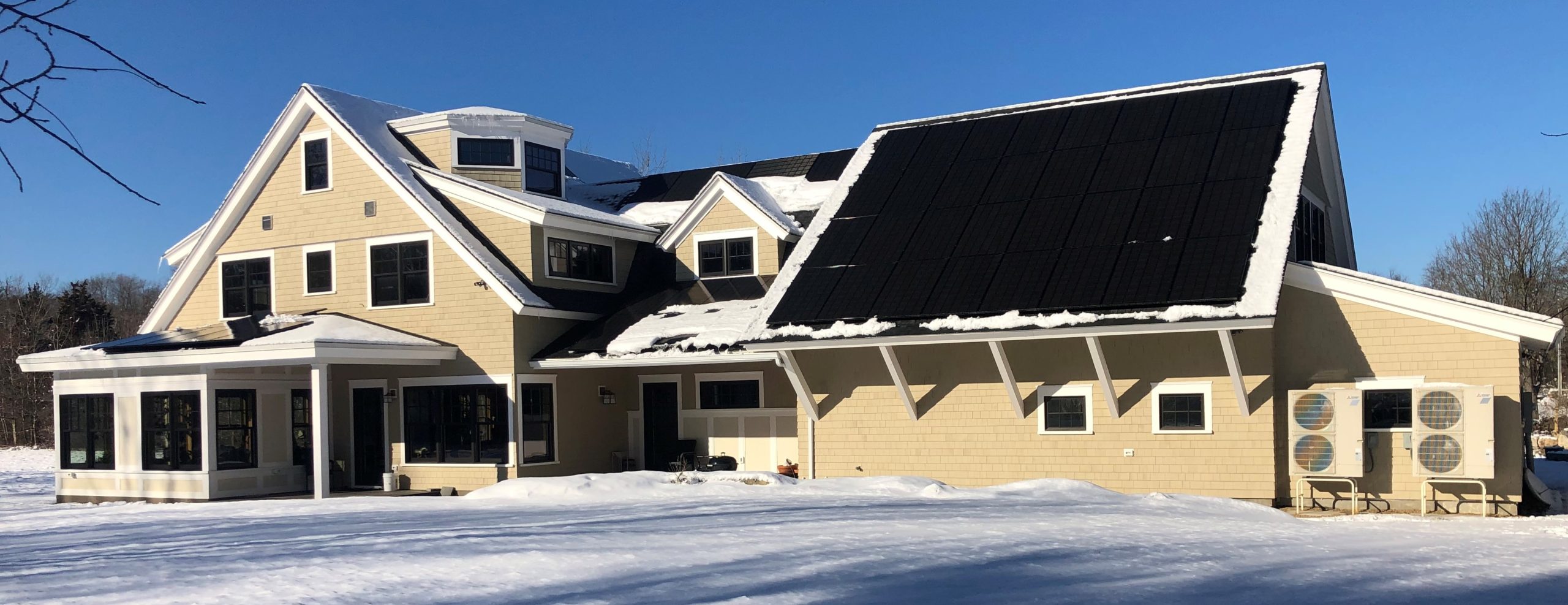SOLAR PANELS AND PROPER ROOF DESIGN AND VENTING

SOLAR PANELS AND THE INVASION OF THE ROOF VENTS
Currently, most solar panels are installed on existing houses; but what a nightmare that can be. Older roofs were not designed in anticipation that solar panels would be added later. Therefore, many older roofs look like this. What a mess! This roof can barely fit any solar panels due to the interference with the vents. — Vents are a solar panel killer!

Another problem with many roof designs is a frequent abundance of gables, peaks, valleys, ridges, dormers, offsets etc. These (sometimes superfluous) architectural features limit the number of solar panels that can be installed. Take the pictured roof (below) for example. It is a southerly facing roof with excellent solar potential, except for the fact that the design severely limits the number of solar panels that can be installed. In addition, such complex roof designs with gables, ridges and off-sets tend to cast shadows across the roof during portions of the day. These shadows can materially degrade the amount of watts your panels will produce. In a subsequent post, I will demonstrate this shading degradation based on actual measured outputs of individual solar panels at THE HAYFIELD HOUSE.

When solar panels are eventually added to these types of roofs, the outcome looks like this roof below (which isn’t too bad) but a lot more solar panels could have been added if the original design was less ‘choppy’.

If solar panels are planned to be installed on the roof of a new house, portions of its southerly roof should be designed with few structures that will interfere with the installation of solar panels. THE HAYFIELD HOUSE’s roof was designed with a portion of its southerly facing roof having no gables or vents. The garage portion of this southerly roof fits 32 solar panels, with an additional 20 panels shown further to the left.

The above suggested roof design for solar panels doesn’t preclude the ability to add architectural details to the over-all roof design. Such ‘flare’ just needs to be ‘pushed’ to non-southerly facing roofs so as to not interfere with the solar panels. For example, the complex roof design on this facade of THE HAYFIELD HOUSE is mostly contained to the roof pitches that are facing east (which isn’t an ideal direction for solar panels to face). All of the solar panels on the HAYFIELD HOUSE face southerly. Surprisingly enough, even with some of the roof complexities shown, this solar lay-out has shading issues on only 4 solar panels out of the 52 installed panels. I’ll discuss this shading issue in more detail in another post.
So the moral of this story is:
If you are going to vent, do it facing north.




[…] I also knew nothing about air-source hot water tanks that are used in many ZNE homes. That was OK,…